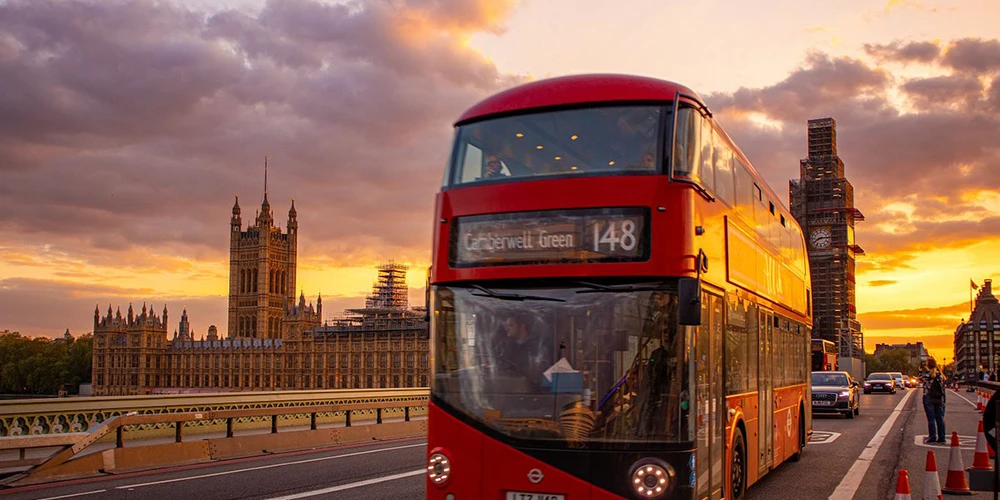Big red buses are recognised – and even found – all over the world, and people recognise them as symbols of London. Visitors climb into London buses to go and see the Niagara Falls. London buses can be seen driving round Europe to advertise big department stores, or British events . They don’t need to have the words “London Transport” on the side of them: they are instantly recognised by millions of people!
It was almost 100 years ago, on October 25th 1911, the London General Omnibus Company ran their last horse-drawn omnibus through the streets of the capital. Since then the big red motor bus has been London’s “king of the road”.
Today, every day, thousands of Londoners use the big red buses to move – often slowly – around town; and lots of tourists know that a one-day London bus pass, valid on all regular bus routes, offers a wonderful way to see Britain’s capital city.
The idea of the “double decker” is actually much older than the motor bus; it is simply a continuation of the system that was used for public transport in the age of horse-drawn vehicles, when some of the passengers sat inside, and the rest travelled on the roof. Too bad if it was raining!
The earliest horse-drawn double-deckers in London had steps at the back, so that people could climb up onto the roof. The main difference with today’s buses was that in those days, there was no protection for the people travelling on top: if it rained, they could pull a sort of oil-cloth cover out of the back of the seat in front of them, and pull it over them; but they still got wet.
Today the only open-topped buses are the special tourist buses. It wasn’t until the 1930’s that all new buses came equipped with roofs over the upper deck! Increasingly powerful engines meant that buses could be bigger and heavier; like trams, they could then have roofs.
The most famous London buses, however, are not those that filled the Capital’s streets in the 1930’s, but the powerful “Routemasters” which date from the 1950’s and 60’s. These are the buses that have been taken all over the world, the buses that you can see in the tourist brochures, and the ones which have been sold, in miniature, to millions of visitors and souvenir hunters.
Things started to go wrong for the London bus in the late 1960’s. That was when the Ministry of Transport decided that it would only give financial help to bus companies that bought new buses with doors! Suddenly London Transport found they could no longer buy any more of their favourite Routemasters, that they had designed. They had instead to choose other models. Today, European Union rules also say that new buses for public transport must have doors.
London, however, resisted the bureaucrats! Determined to keep the buses that Londoners (and tourists) want, London Transport decided to keep the old Routemasters going as long as possible. Five hundred of the solid and popular old buses were extensively renovated, and put back on the road as good as new, if not better! But not even the Routemaster could resist the winds of change.
Modern transport systems require one-man buses, not buses with both a driver and a conductor. So in 2005, the old Routemasters were finally taken out of normal service.
Still, it’s not too late to enjoy travelling on one of these historic buses. Some of the old buses have been preserved, and are used on two “heritage routes” through the centre of London, specially for tourists. Route 9 goes from the Royal Albert Hall to Aldwych, via Piccadilly circus and Trafalgar Square. Route 15 goes from Trafalgar Square to the Tower of London, via St. Paul’s Cathedral. And more of the old Routemasters are used by the tourist bus companies, which offer trips round the centre of London.
Before the end of this post, I found this lomo effect video below on London bus tour in which the author shot everything with an HD camera and a DIY 35mm adapter while sitting in one of those red vehicles of London. Please enjoy the deliberate work.

Comments (0)